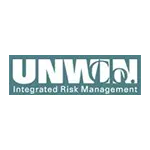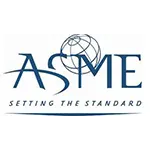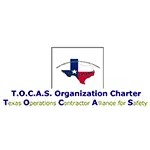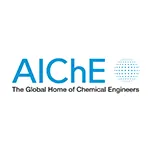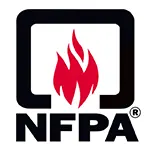Let us help you make sense of PSM / RMP!
My friend Brian Chapin will be offering an open-enrollment PSM/RMP class in Burleson, Texas, July 8th to 11th, 2025. Brian is an absolute pro in NH3 Refrigeration Process Safety. Anyone who attends will also get a FREE membership to SAFTENG. You can get more information on the class with this link.
CLICK HERE to Renew your Membership
CLICK HERE for a NEW Membership
CLICK HERE to see eligibility requirements for FREE Membership
If you have any questions, please contact m
SAFTENG has:
- Over 18,000 categorized unsafe acts/conditions and accident/injury photos
- Over 1,500 ppt's & doc's in the SAFTENG Library
- Over 4,000 Technical Articles on Process Safety, Emergency Response & OSH topics
- Over 450 videos (those not allowed on YouTube Channel)
Many THANKS to my NEW Members and those who CONTINUE to support SAFTENG:









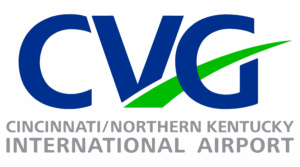




December 20, 2023
At 8:00 a.m. on June 26, 2022, two (2) employees emptied and cleaned an open-topped frack tank (Tank #4) at an oil and gas services site. There were no eyewitnesses, and the employees were working at a remote site alone, so few details are known about what occurred. At the time of the investigation, hydrogen sulfide (H2S) gas was detected at levels between 3 parts per million (ppm) and 5 ppm, which...
Read More
December 20, 2023
For those who live within the process safety bubble, you know all about the MOC “requirements” from OSHA and EPA process safety standards. However, an MOC program is vital to any formal Safety Management System. And you would be correct to say “OSHA (nor EPA) does not require one outside a PSM/RMP standards. But after a busy year helping clients with both traditional...
Read More
December 20, 2023
One of my all time favorite RAGAGEPs is the Compressed Gas Association’s (CGA) 2.1 for those who handle anhydrous ammonia. This year, they published the 7th Edition, and they made it even better. Unlike so many RAGAGEPs, the CGA embraced the practice of “Continuous improvement” and really did a nice job with their additional explanations of their existing requirements. ...
Read More
December 19, 2023
This is a really good case to read. It involves light-curtains and lasers as “guarding” and the fact that they were not functioning. One of the machines had broken a manager’s foot when he/she entered to troubleshoot a problem (LOTO citation). The facility had put tape on the floor as an indicator rather than fixing the guarding. The Willful citation was due...
Read More
December 17, 2023
The men were helping to build a new sewage pumping facility. They were in a concrete foundation, a trench-like part of the structure about 40 feet deep. Sources said giant intakes five feet in diameter are inside the structure. Inflatable plugs secured with chains are used to keep the water out. Some sort of catastrophic failure immediately sent sewage water into the space where the men were working...
Read More
December 17, 2023
This material is from the United States Coast Guard (USCG) and is an EXCELLENT explanation of the required electrical markings/labels on tools/equipment used within a Hazardous Location.
Simply put, if the tool/equipment is NOT marked/labeled for use in the specific HAZLOC, it can NOT be brought into the HAZLOC.
…
HomeRead More »
Read More
December 15, 2023
On May 15, 2021, an incident resulted in the fatality of an offshore worker when two production personnel were pressure testing a 16-inch well surface casing and anexplosion occurred. The explosion entailed a high-pressure release with no signs of ignition. Information obtained by BSEE during the subsequent investigation determined that personnel were using a high-pressure well to supply the...
Read More
December 14, 2023
Respondent has a liquid natural gas pretreatment process at the Facility, meeting the definition of ” process” as defined by 40 C.F.R. § 68.3. Respondent receives natural gas by pipeline and pretreats the natural gas to remove carbon dioxide, sulfur compounds, water, mercury, and heavy hydrocarbons. The regulated substance under 40 C.F.R. Part 68 Chemical Accident RMP regulations is Natural...
Read More
December 14, 2023
Respondent is the owner and operator of an oil refinery. On September 9-13, 2019, the EPA inspected the Facility to determine compliance with 40 C.F.R. part 68. Based on the observations of the EPA inspectors at the inspection, the EPA has determined that Respondent uses, handles, and/or stores more than the threshold quantity of Flammable Mixture, Hydrogen flouride/Hydrofluoric acid, Butane, Isobutane,...
Read More
December 10, 2023
First, I am not fully bought into the “psychological safety” concept. For me, it is just how we should manage safety, so I am not a “labels” kind of safety pro. However, I get a lot of questions about HOP and Psychological Safety, and the one place we could begin to utilize these approaches is in our “annual periodic LOTO inspections.” Let me explain…...
Read More
December 10, 2023
On New Year’s Eve, I hope many safety pros will choose a 2024 resolution to end the regurgitation of OSHA standards as their “written programs.” I have always used the OSHA standard as my baseline, but these programs need to EXPLAIN HOW the facility will meet the requirements – not repeat the requirements. For example… I hope we can move on from simply cutting and pasting...
Read More
December 9, 2023
One thing that many find confusing regarding the control of hazardous energy is the actual hazard they are trying to render to a Zero Energy State (ZES). This is a simple concept, but many get it wrong in their programs and machine-specific procedures. Let’s take compressed air as an example. Many compressed air systems in manufacturing facilities will operate around 120 psi. ...
Read More




